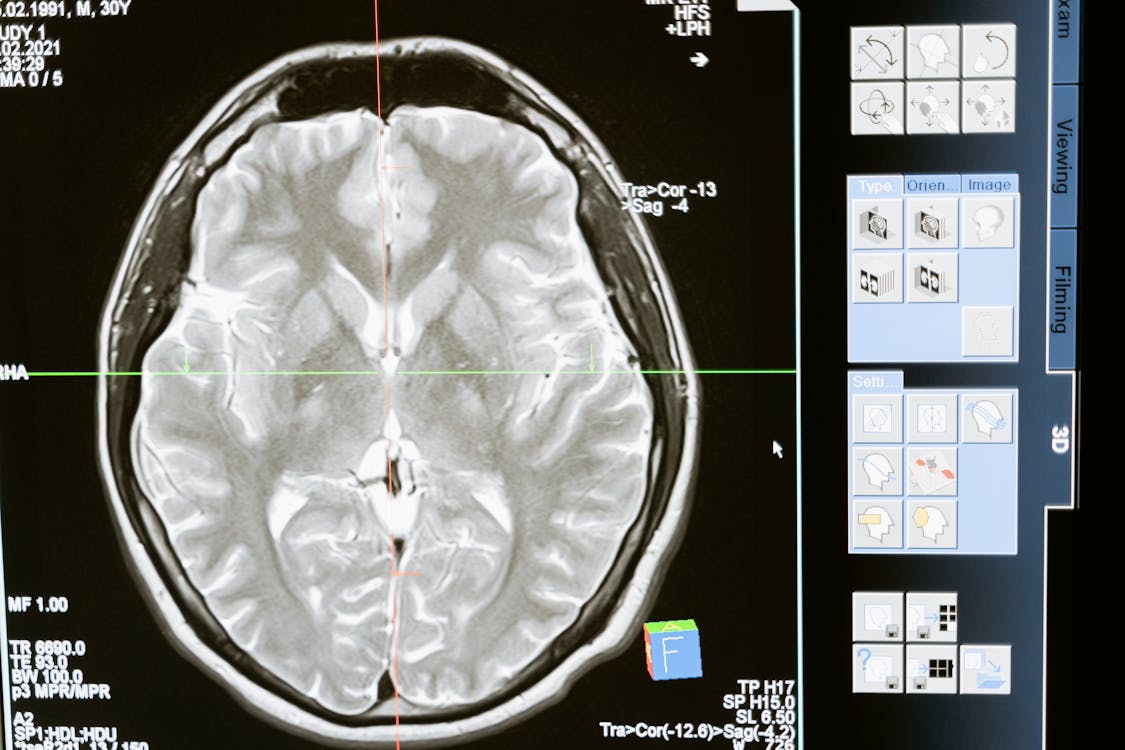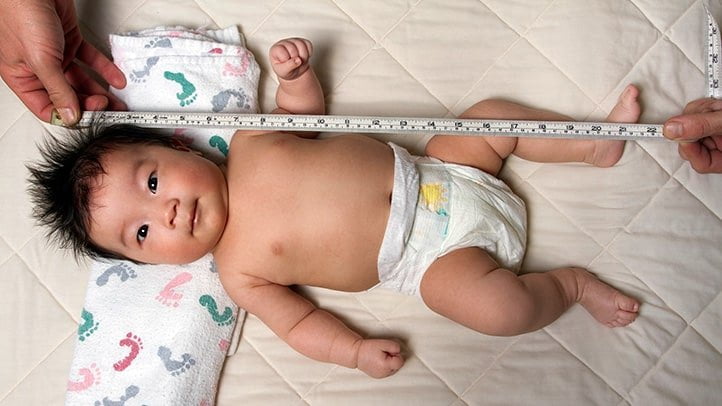Table of Contents
- What is ADHD, Really? Beyond the Common Myths
- The Three Faces of ADHD: Understanding the Presentations
- Peeling Back the Layers: Recognizing Inattentive Signs of ADHD
- Spotting the Spark: Recognizing Hyperactive-Impulsive Signs of ADHD
- When Do These Signs Become a Concern? Key Considerations
- ADHD Across Different Age Groups: A Quick Look
- Actionable Insights & Practical Tips for Parents
- Beyond the Diagnosis: Hope and Support
- Conclusion: Understanding Leads to Empowerment
Is It More Than Just Child’s Play? Recognizing Signs of Attention-Deficit/Hyperactivity Disorder in Children
Ever watch your child bounce off the walls, struggle to finish a simple puzzle, or seem to be in a world of their own during conversations? As parents, we often wonder what’s typical childhood energy and what might be something more. If these scenarios sound a little too familiar and are causing significant challenges at home or school, it might be time to learn about Attention-Deficit/Hyperactivity Disorder (ADHD). This isn’t about labeling; it’s about understanding and finding the right support for your child to thrive.
ADHD is one of the most common neurodevelopmental disorders of childhood, affecting millions of children worldwide. Recognizing the signs early can make a world of difference in a child’s development, academic success, and self-esteem. This article will guide you through the nuances of ADHD, helping you identify potential signs in your child and understand the next steps towards getting clarity and support.
What is ADHD, Really? Beyond the Common Myths
Before diving into specific symptoms, let’s clear up some common misconceptions. ADHD is not a result of bad parenting, laziness, or a simple lack of discipline. It’s a complex brain-based condition characterized by persistent patterns of inattention and/or hyperactivity-impulsivity that interfere with functioning or development.
Think of the brain as an orchestra. For someone with ADHD, the conductor (the part of the brain responsible for executive functions like attention, organization, and impulse control) might be having a tough time keeping all the musicians playing in harmony. This doesn’t mean the musicians are bad or the conductor isn’t trying; it just means they need different strategies or support to make beautiful music together.
Key things to remember about ADHD:
- It’s Neurobiological: ADHD involves differences in brain structure, brain function, and neurotransmitter activity (especially dopamine and norepinephrine).
- It’s a Spectrum: Symptoms can range from mild to severe and can present differently in each child.
- It’s Not a Choice: Children with ADHD don’t choose to be inattentive or hyperactive. Their brains are wired differently.
- It Can Co-occur: ADHD often exists alongside other conditions like learning disabilities, anxiety, depression, or oppositional defiant disorder.

The Three Faces of ADHD: Understanding the Presentations
The way ADHD manifests can vary significantly, which is why professionals categorize it into three main presentations based on the Diagnostic and Statistical Manual of Mental Disorders, 5th Edition (DSM-5):
- Predominantly Inattentive Presentation: Children with this type primarily struggle with paying attention, organizing, and following through on tasks. They might be seen as daydreamers or forgetful, and their difficulties might not be as outwardly obvious as those with hyperactive symptoms.
- Predominantly Hyperactive-Impulsive Presentation: These children exhibit excessive energy, restlessness, and difficulty controlling impulses. They might talk non-stop, interrupt others, and find it hard to sit still.
- Combined Presentation: This is the most common type, where children show significant symptoms of both inattention and hyperactivity-impulsivity.
It’s important to note that symptoms can change over time. A child might present with hyperactive-impulsive symptoms in early childhood, but these may lessen or become more internalized as they get older, while inattentive symptoms might become more prominent.
Peeling Back the Layers: Recognizing Inattentive Signs of ADHD
Children with the predominantly inattentive presentation of ADHD often fly under the radar because their symptoms are less disruptive than hyperactivity. However, their internal struggles can be significant. According to the DSM-5, a child must exhibit at least six of the following symptoms (five for individuals aged 17 and older) for at least six months, to a degree that is inconsistent with developmental level and negatively impacts social and academic/occupational activities:
Signs of Inattention:
- Often fails to give close attention to details or makes careless mistakes in schoolwork, at work, or during other activities (e.g., overlooks or misses details, work is inaccurate). You might notice frequent errors in homework, even on topics they understand.
- Often has difficulty sustaining attention in tasks or play activities (e.g., has difficulty remaining focused during lectures, conversations, or lengthy reading). They might start a game or chore with enthusiasm but quickly lose interest and move on to something else.
- Often does not seem to listen when spoken to directly (e.g., mind seems elsewhere, even in the absence of any obvious distraction). You might find yourself repeating instructions multiple times.
- Often does not follow through on instructions and fails to finish schoolwork, chores, or duties in the workplace (e.g., starts tasks but quickly loses focus and is easily sidetracked). This isn’t defiance; it’s a genuine struggle to stay on track.
- Often has difficulty organizing tasks and activities (e.g., difficulty managing sequential tasks; difficulty keeping materials and belongings in order; messy, disorganized work; has poor time management; fails to meet deadlines). Their backpack might be a black hole, and their room perpetually chaotic.
- Often avoids, dislikes, or is reluctant to engage in tasks that require sustained mental effort (e.g., schoolwork or homework; for older adolescents and adults, preparing reports, completing forms, reviewing lengthy papers). This can be perceived as laziness, but it’s often due to the significant mental energy these tasks demand.
- Often loses things necessary for tasks or activities (e.g., school materials, pencils, books, tools, wallets, keys, paperwork, eyeglasses, mobile telephones). The phrase “Have you seen my…?” might be a common refrain.
- Is often easily distracted by extraneous stimuli (for older adolescents and adults, may include unrelated thoughts). A bird outside the window, a pen dropping, or even their own thoughts can derail their focus.
- Is often forgetful in daily activities (e.g., doing chores, running errands; for older adolescents and adults, returning calls, paying bills, keeping appointments). This can include forgetting to bring lunch to school or relaying important messages.
It’s crucial to remember that all children can exhibit some of these behaviors occasionally. The key for an ADHD diagnosis is the persistence, pervasiveness, and impairment caused by these symptoms.

Spotting the Spark: Recognizing Hyperactive-Impulsive Signs of ADHD
Children with predominantly hyperactive-impulsive ADHD are often described as being “driven by a motor.” Their energy levels and difficulty with self-control can be challenging for them and those around them. Similar to inattention, at least six of the following symptoms (five for those 17+) must be present for at least six months and cause impairment:
Signs of Hyperactivity:
- Often fidgets with or taps hands or feet, or squirms in seat. They might constantly shift their position, jiggle their legs, or fiddle with objects.
- Often leaves seat in situations when remaining seated is expected (e.g., in the classroom, at the dinner table, during a story).
- Often runs about or climbs in situations where it is inappropriate. (In adolescents or adults, may be limited to feeling restless). This isn’t just typical childhood energy; it’s often excessive and contextually inappropriate.
- Often unable to play or engage in leisure activities quietly. Their play is frequently loud and boisterous, even when quiet play is encouraged.
- Is often “on the go,” acting as if “driven by a motor” (e.g., is unable to be or uncomfortable being still for extended time, as in restaurants, meetings; may be experienced by others as being restless or difficult to keep up with).
- Often talks excessively. They might dominate conversations or talk at a rapid pace.
Signs of Impulsivity:
- Often blurts out an answer before a question has been completed (e.g., completes people’s sentences; cannot wait for turn in conversation).
- Often has difficulty waiting their turn (e.g., while waiting in line). This can be incredibly frustrating for them and other children.
- Often interrupts or intrudes on others (e.g., butts into conversations, games, or activities; may start using other people’s things without asking or receiving permission; for adolescents and adults, may intrude into or take over what others are doing).
For a child to be diagnosed with the Combined Presentation, they would meet the criteria for both inattention (at least 6 symptoms) and hyperactivity-impulsivity (at least 6 symptoms).
When Do These Signs Become a Concern? Key Considerations
Nearly every child will display some of these behaviors from time to time. So, what distinguishes typical childhood behavior from potential ADHD? Professionals look for several key factors:
- Persistence: The symptoms must have been present for at least six months. This isn’t a phase that lasts a few weeks.
- Pervasiveness: The symptoms must be present in two or more settings. For example, if a child is only inattentive at home but not at school or with friends, other factors might be at play. Common settings to consider are home, school, and social situations (e.g., with friends, during extracurricular activities).
- Impact: The symptoms must clearly interfere with, or reduce the quality of, social, academic, or occupational functioning. Are the behaviors causing problems with friendships, leading to poor grades, or creating significant family stress?
- Age of Onset: Several inattentive or hyperactive-impulsive symptoms must have been present prior to age 12 years. Even if a diagnosis is made later, the signs typically emerge in childhood.
- Not Better Explained by Another Condition: The symptoms are not solely a manifestation of oppositional defiant disorder, conduct disorder, anxiety disorder, dissociative disorder, personality disorder, or psychotic disorder. They also aren’t better explained by another medical condition (e.g., thyroid problems, hearing or vision impairments, substance abuse) or situational factors (e.g., a recent major life change).
ADHD Across Different Age Groups: A Quick Look
While the core symptoms remain, how ADHD presents can shift with age:
- Preschoolers (Ages 3-5): Diagnosing ADHD in very young children can be tricky, as many preschoolers are naturally active and impulsive. However, in children with ADHD, these behaviors are usually more extreme and persistent than in their peers. Hyperactivity is often the most prominent symptom. They might be constantly on the move, have difficulty participating in group activities like circle time, and exhibit more intense emotional reactions.
- School-Aged Children (Ages 6-12): This is often when ADHD symptoms become more noticeable and problematic, particularly as academic demands increase. Inattention can lead to difficulties with schoolwork, listening to teachers, and organization. Hyperactivity might manifest as restlessness in class, and impulsivity can affect social interactions and rule-following.
- Adolescents (Ages 13-18): Hyperactivity may decrease or become less overt (e.g., feelings of restlessness rather than constant running around). However, inattention and impulsivity often persist and can significantly impact academic performance, driving safety, and decision-making. Teens with ADHD may struggle more with time management, planning for the future, and may be at higher risk for substance use or other risky behaviors if their ADHD is unmanaged.

Actionable Insights & Practical Tips for Parents
If you’re reading this and nodding along, recognizing some of these signs in your child, you’re likely wondering, “What now?” Here are some practical steps you can take:
1. Observe and Document
Before jumping to conclusions, take some time to observe your child’s behavior systematically. Keep a journal or notes. For each concerning behavior, jot down:
- What specifically happened? (e.g., “Couldn’t sit still during dinner, got up 5 times.”)
- When did it happen? (e.g., “During homework time,” “While playing with a friend.”)
- Where did it happen? (e.g., “At home,” “At school – according to teacher.”)
- How often does it occur? (e.g., “Daily,” “Several times a week.”)
- How long does the behavior last?
- What is the impact of the behavior? (e.g., “Homework incomplete,” “Friend got upset.”)
This information will be invaluable when you speak with professionals.
2. Talk to Your Child’s Teacher(s)
Teachers are often excellent observers of childhood behavior in a structured setting. Schedule a meeting to discuss your concerns. Ask them about your child’s:
- Attention and concentration in class.
- Organizational skills.
- Ability to follow instructions.
- Impulse control.
- Social interactions with peers.
- Academic performance compared to their potential.
Share your observations from home and ask if they see similar patterns at school. Many schools have processes in place to support students with attention or behavioral challenges.
3. Consult Your Pediatrician or Family Doctor
Your child’s doctor is a good first point of contact. They can:
- Conduct an initial screening for ADHD.
- Rule out other potential medical causes for the symptoms (e.g., vision or hearing problems, thyroid issues, sleep disorders).
- Provide referrals to specialists if needed, such as a child psychologist, psychiatrist, developmental pediatrician, or neurologist.
4. Seek a Comprehensive Evaluation
A proper ADHD diagnosis requires a comprehensive evaluation by a qualified healthcare professional. This evaluation typically involves:
- Clinical Interviews: Detailed conversations with you (the parents/guardians) and your child.
- Behavior Rating Scales: Standardized questionnaires completed by parents, teachers, and sometimes the child (if old enough). These help quantify the frequency and severity of symptoms.
- Review of Records: School reports, medical history, and any previous evaluations.
- Observation: The professional may observe your child directly.
- Assessment for Co-occurring Conditions: Screening for learning disabilities, anxiety, depression, etc., as these often accompany ADHD.
There’s no single blood test or brain scan that can definitively diagnose ADHD. It’s a clinical diagnosis based on established criteria and a thorough assessment of the child’s history and functioning.
5. Focus on Supportive Strategies (Even Before a Diagnosis)
Whether or not your child ultimately receives an ADHD diagnosis, implementing supportive strategies can be beneficial:
- Establish Routines and Structure: Children with attention challenges thrive on predictability. Maintain consistent daily schedules for meals, homework, play, and bedtime.
- Break Down Tasks: Large tasks can be overwhelming. Break them into smaller, more manageable steps.
- Clear and Concise Instructions: Give one instruction at a time. Make eye contact and ask your child to repeat the instruction back to you.
- Positive Reinforcement: Catch your child being good! Praise effort and specific positive behaviors. Consider reward systems for completing tasks or showing desired behaviors.
- Minimize Distractions: Create a quiet, organized space for homework. Reduce screen time, especially before bed.
- Encourage Physical Activity: Regular exercise can help manage excess energy and improve focus.
- Ensure Adequate Sleep and Nutrition: A healthy diet and sufficient sleep are crucial for brain function and emotional regulation.

Beyond the Diagnosis: Hope and Support
Receiving an ADHD diagnosis for your child can bring a mix of emotions – relief at finally having an explanation, concern about the future, and perhaps a sense of being overwhelmed. Remember, ADHD is a manageable condition. With the right support, strategies, and sometimes medication, children with ADHD can lead successful and fulfilling lives.
It’s also important to recognize the potential strengths that can come with ADHD. Many individuals with ADHD are:
- Creative and Imaginative: Their minds can make unique connections and think outside the box.
- Energetic and Enthusiastic: They often bring a zest for life and passion to their interests.
- Spontaneous and Flexible: They can be quick to adapt to new situations.
- Resilient: Having navigated challenges, many develop strong coping skills.
- Hyperfocused (at times): When truly interested in something, they can focus intensely and achieve great things.
The journey involves understanding your child’s unique brain, advocating for their needs, and building a supportive environment at home and school. Connect with other parents of children with ADHD, explore resources from reputable organizations (like CHADD or ADDitude Magazine), and work closely with your child’s healthcare team and educators.
Conclusion: Understanding Leads to Empowerment
Recognizing the signs of ADHD in children is the first crucial step towards providing them with the understanding and support they need to navigate their world successfully. Whether it’s the child who seems to be constantly daydreaming, the one who can’t sit still, or the one who struggles with both, persistent patterns of inattention, hyperactivity, and impulsivity that impact daily life warrant a closer look.
Remember, observing these signs doesn’t automatically mean your child has ADHD, but it does mean it’s worth exploring further with professionals. An accurate diagnosis can open doors to effective interventions, educational support, and strategies that help your child harness their strengths and manage their challenges.
Parenting a child with ADHD can have its unique hurdles, but it’s also a journey filled with opportunities to see the world through a different lens – often a more vibrant, energetic, and creative one. By arming yourself with knowledge, seeking appropriate help, and offering unwavering love and support, you can empower your child to not just cope with ADHD, but to truly thrive.










